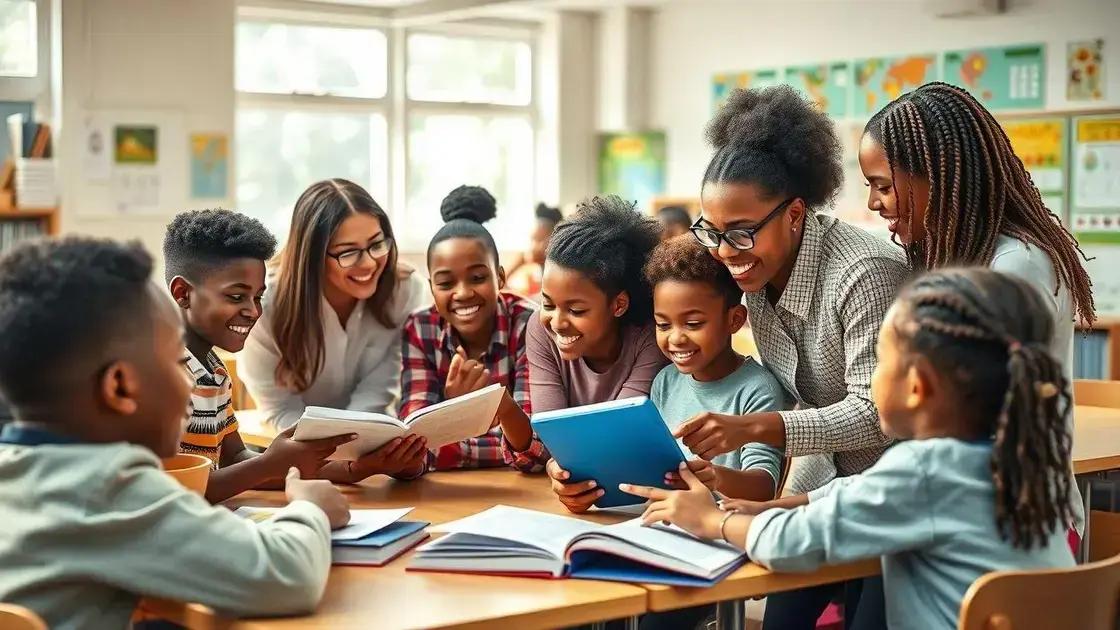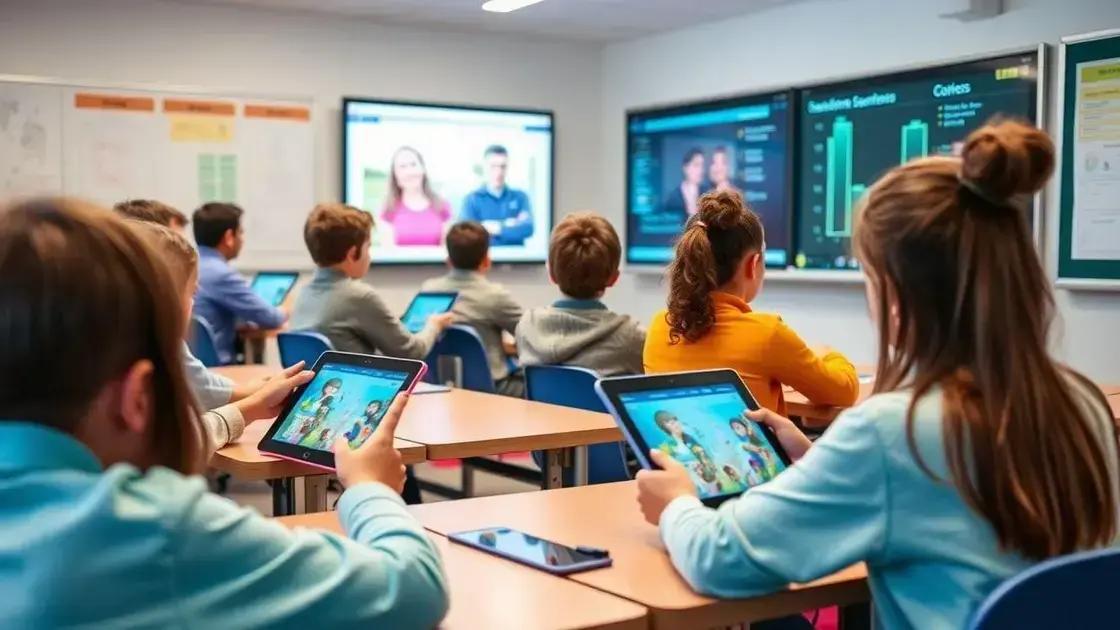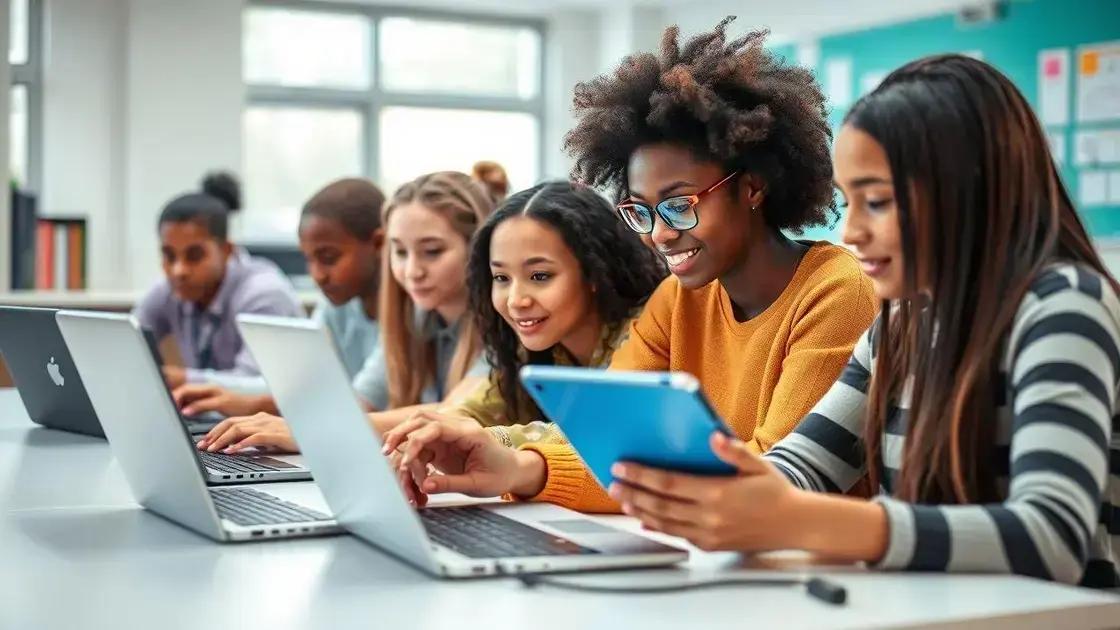Personalized learning: unlock your potential
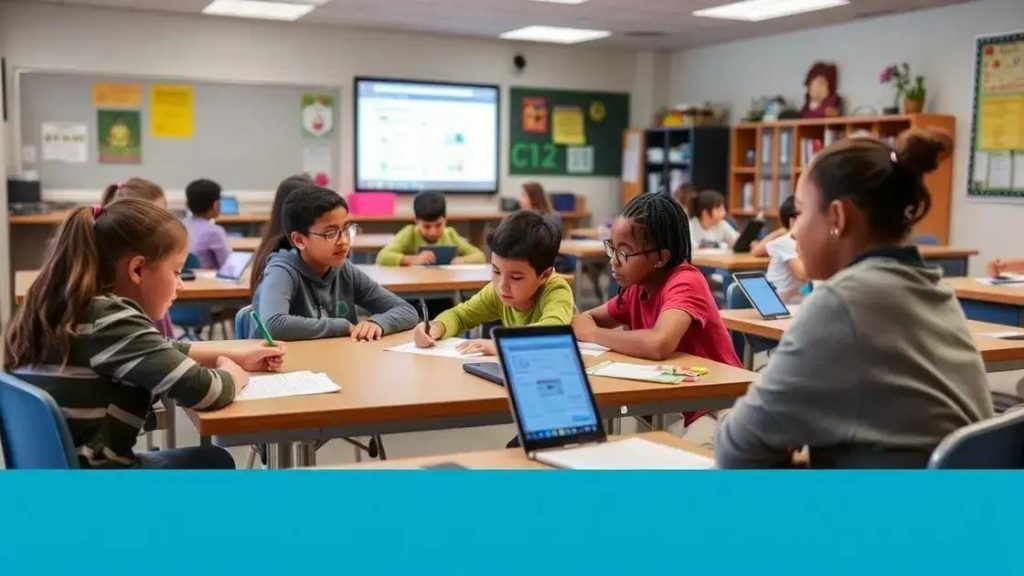
Anúncios
Personalized learning tailors educational experiences to meet individual student needs, utilizing technology and adaptive tools to enhance engagement and skills while addressing challenges like resource access and teacher training.
Personalized learning is reshaping the way we approach education today. Imagine a learning experience tailored just for you, focusing on your unique strengths and needs. This method not only enhances engagement but encourages deeper understanding, making learning feel more relevant.
Anúncios
Understanding personalized learning
Understanding personalized learning is essential for grasping how education is evolving. This approach tailors learning experiences to meet individual student needs, making education more effective and engaging.
At its core, personalized learning emphasizes the idea that no two learners are the same. Each student has unique abilities, preferences, and learning paces. By recognizing these differences, educators can create a more favorable learning environment.
Key principles of personalized learning
Personalized learning is built on several key principles:
Anúncios
- Individualized learning paths
- Flexibility in time and pace
- Ongoing assessment and feedback
- Student agency and ownership of learning
When students are given the opportunity to learn at their own pace, they often demonstrate better understanding and retention of information. This is especially true when students are allowed to pursue topics that interest them.
Benefits of personalized learning
The benefits of implementing this educational approach are profound. Students not only gain knowledge but also develop skills such as critical thinking and problem-solving.
In a personalized learning environment, teachers can provide targeted support for each student. This can include tailored lessons, varying assessments, and specific resources that cater to individual learning styles. As a result, students can achieve goals that they might have thought unattainable.
Ultimately, personalized learning provides a dynamic education experience where each learner feels valued and equipped to succeed in their academic journey.
Benefits of personalized learning in education
The benefits of personalized learning in education are significant and transformative. This educational approach focuses on tailoring the learning experience to suit each student’s unique needs, allowing for more effective learning outcomes.
One key advantage is that it enhances student engagement. When learners interact with content that appeals to their interests and learning styles, they are more likely to participate actively in their education. Moreover, this method promotes self-motivation, leading to greater investment in their academic journey.
Improved academic performance
Personalized learning can lead to improved academic performance. By providing customized resources, educators can address gaps in knowledge and cater to individual strengths.
- Targeted instruction specific to each student’s needs
- Positive feedback that encourages growth
- Flexible pacing that allows deeper exploration of topics
Furthermore, students can progress at their own pace, ensuring they master concepts before moving forward. This reduces frustration and enhances confidence in their abilities.
Development of essential skills
This approach also fosters critical thinking and problem-solving skills. Students engage in projects and real-world applications that require them to analyze information and make informed decisions.
Additionally, personalized learning encourages collaboration among peers. Group work that is tailored to students’ strengths can lead to enriched learning experiences, building teamwork and communication skills.
Ultimately, the shift towards personalized learning not only prepares students for academic success but also equips them with valuable life skills. The focus on individual needs results in a more fulfilling and effective educational experience for everyone involved.
How to implement personalized learning strategies
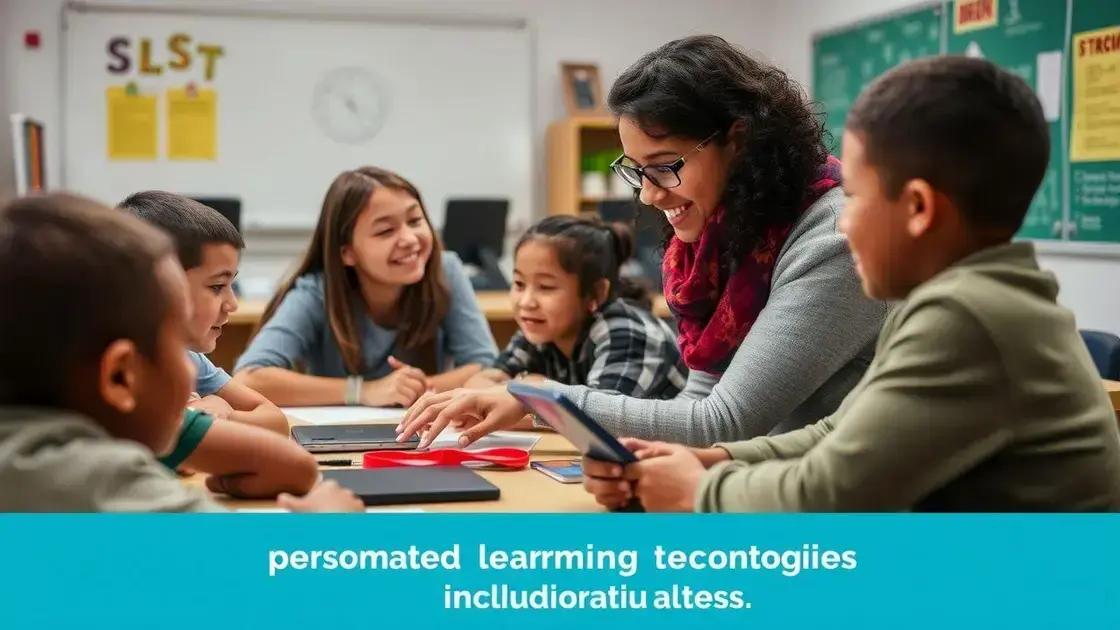
Implementing personalized learning strategies can significantly enhance the learning experience for students. To effectively adopt this approach, educators need a clear framework to guide their actions.
One of the first steps is to assess each student’s strengths, weaknesses, and learning preferences. This assessment drives personalized instruction and allows educators to tailor their teaching methods. Tools like surveys or diagnostic tests can help gather essential information.
Creating individualized learning plans
Once assessments are complete, creating individualized learning plans becomes crucial. These plans should reflect students’ specific goals and required support, ensuring that each student is on a path to success.
- Incorporate student interests into their learning profiles.
- Define measurable objectives for each learner.
- Outline necessary resources and tools to support the learning process.
Following this, it’s important to implement diverse teaching methods that cater to varying learning styles. For instance, combining direct instruction with hands-on activities can meet the needs of both visual and kinesthetic learners.
Utilizing technology for personalized learning
Integrating technology also plays a critical role in personalizing education. Educational software and online platforms allow students to learn at their own pace
. Many programs offer adaptive learning features that adjust content based on student performance.
Moreover, regular feedback is essential. Teachers should provide ongoing assessments and adjust instruction based on progress. This feedback loop encourages student engagement and growth.
Collaboration among educators, parents, and students is vital for successful implementation. By creating a supportive community, personalized learning strategies can thrive, leading to more effective and meaningful educational experiences.
Technology’s role in personalized learning
Technology plays a vital role in personalized learning. By leveraging various tools and resources, educators can create more engaging and tailored learning experiences for each student.
One significant aspect of technology in this context is the use of adaptive learning platforms. These platforms analyze students’ performance in real-time, adjusting the content and difficulty level to suit their unique needs. This ensures that every learner can progress at their own pace.
Benefits of using technology in personalized learning
Utilizing technology offers several benefits:
- Increased access to diverse resources and materials.
- Enhanced interaction through multimedia content.
- Immediate feedback that supports continuous improvement.
- Opportunities for collaboration beyond the classroom.
Furthermore, technology allows students to take control of their learning. They can choose specific topics that interest them or pursue personalized learning pathways that align with their goals. This autonomy fosters greater motivation and engagement.
Tools and resources for personalized learning
There are numerous tools available that support personalized learning strategies. Learning management systems (LMS) help teachers track progress and manage content delivery efficiently. Additionally, educational apps can provide practice exercises tailored to individual skill levels.
Online forums and communities also contribute to personalized learning by connecting students with peers and mentors. This encourages discussion, feedback, and shared learning experiences. Overall, the integration of technology not only enhances the educational experience but also prepares students for a technology-driven world.
Challenges and solutions for personalized learning
While personalized learning offers numerous benefits, it also faces several challenges. Understanding these hurdles is crucial for effective implementation. By recognizing common problems, educators can develop practical solutions to ensure that personalized learning is successful.
One major challenge is varying levels of access to technology. Not every student has the same access to devices and high-speed internet, which can limit their ability to engage in personalized learning activities. Teachers must find ways to bridge this gap.
Identifying challenges in personalized learning
Some specific challenges include:
- Inconsistent student participation and engagement.
- Difficulty in tracking progress for each student.
- Limited resources for training teachers on personalized methods.
- Balancing group instruction with individualized attention.
Addressing these challenges requires a multi-faceted approach. For instance, schools can implement programs that provide devices to students in need, ensuring everyone has an opportunity to participate in the learning process. Additionally, utilizing low-tech learning strategies can help engage students without relying solely on technology.
Practical solutions for overcoming obstacles
Another effective solution is professional development for educators. Training teachers to effectively manage personalized learning in their classrooms empowers them to better support their students. Workshops, peer mentoring, and online resources can provide valuable insights and techniques.
Tracking student progress is essential in personalized learning. Using assessment tools that offer insights into individual performance helps teachers adjust their instruction accordingly. These tools can guide educators in providing timely feedback and ensuring students are staying on track.
Ultimately, overcoming challenges in personalized learning is possible with the right strategies and resources in place. By continuously adapting to the needs of students, educators can create a more equitable and effective learning environment.
In conclusion, personalized learning is a powerful approach that can transform education for students. By leveraging technology and adapting to individual needs, educators can create engaging and effective learning experiences. Although challenges may arise, such as access to resources and teacher training, there are practical solutions to overcome these obstacles. Investing in technology, developing individualized plans, and fostering collaboration can ensure that every student has the opportunity to succeed. As education continues to evolve, embracing personalized learning will be essential for preparing students for their future.
FAQ – Frequently Asked Questions about Personalized Learning
What is personalized learning?
Personalized learning is an educational approach that tailors learning experiences to meet each student’s individual needs, preferences, and goals.
How can technology support personalized learning?
Technology supports personalized learning by providing adaptive learning platforms, resources, and tools that allow students to learn at their own pace and style.
What challenges might educators face with personalized learning?
Educators may face challenges such as varying access to technology, tracking student progress, and the need for ongoing teacher training.
How can schools overcome obstacles in implementing personalized learning?
Schools can overcome obstacles by providing resources for technology access, offering professional development for teachers, and fostering collaboration among students, educators, and parents.
